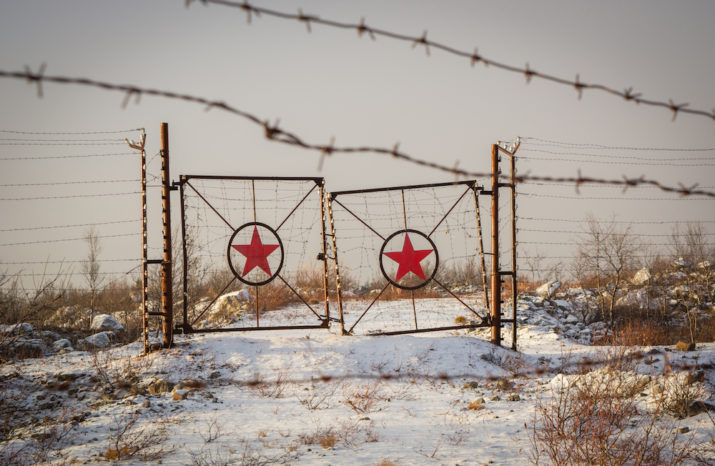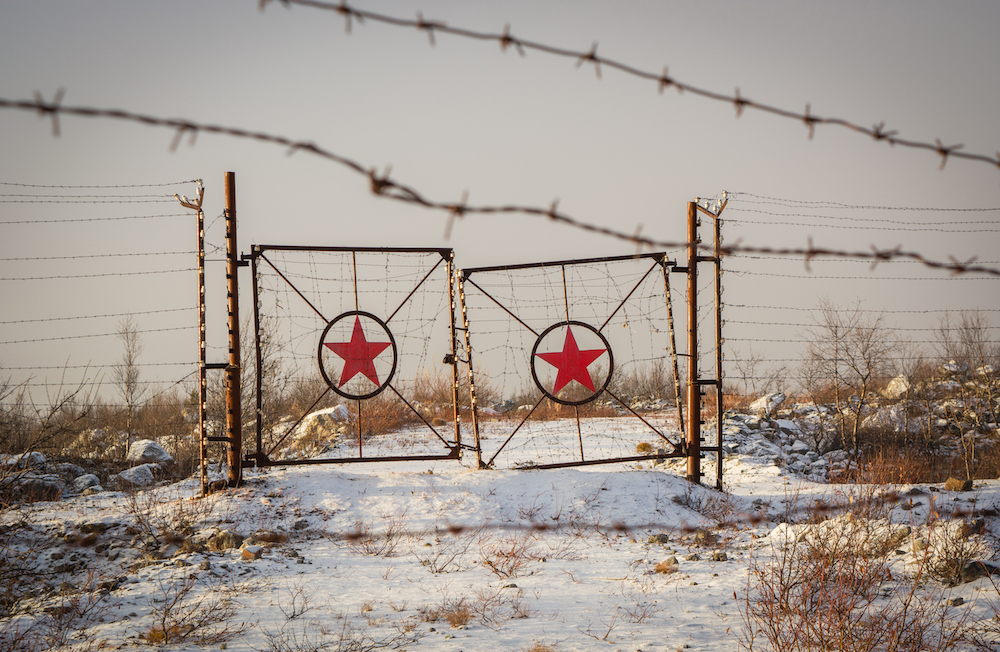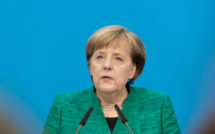

How world politics has increasingly assumed regional patterns since 1989 – and departed from the European model
In a journal focused on Europe, one nation’s issues can hardly be discussed apart from region-level processes.[1] The most pressing political issues in Europe – from migration to monetary and financial governance – have a European dimension, rather than a national one. Furthermore, EU institutions share – if not trump – the jurisdiction of national governments. Is this an exception in contemporary world politics? Not really: in addition to the EU, regional organizations such as the Association of South East Asian Nations (ASEAN), African Union (AU), Gulf Cooperation Council (GCC), and Mercosur have proliferated. The trend towards clustering politics at the regional level – and the creation of regional institutions to manage issues – has characterized most of world politics after the Cold War. The use of regional categories in both news and academia has grown, and the number of Area Studies degrees has also increased dramatically.[2] The most relevant publications on regionalism since the time of Karl Deutsch’s 1957 book Security Communities date to the 1990s and the 2000s: from Andy Hurrell and Louise Fawcett’s 1995 study on the revival of regionalism, to Peter Katzenstein, Amitav Acharya, Barry Buzan and Ole Waever’s regional theories of international relations.
Why this surge in the post-Cold War period? After all, regional-level processes were a central feature of the Cold War as well. The post-war international order was built to facilitate decentralized political processes of state-building, security management and development.[3] The UN Charter recognized the legitimacy of regional arrangements in article 52, and regional trade agreements within GATT eventually became key mechanisms in the process of tariff reduction. The beginning of the Cold War only strengthened this process, as the USSR and the US raced to all corners of the world, creating regional arrangements for the co-optation of allies and the containment of the rival superpower. Washington was particularly active in developing regional institutions, encouraging the containment of communism at regional level, through NATO, SEATO, the OAS, and the Baghdad Pact.[4]
However, not enough attention was placed on regionalism before the end of 1989. The global superpower rivalry hit the headlines: even when regional institutions were at work, they were under heavy extra-regional influence from DC and Moscow. [5] A short period of enthusiasm for European integration died down in the 1960s. Only the end of the global political and ideological rivalry allowed to “set the regions free.”[6] Arthur Solingen argued that the reawakening of regional interest was similar to the discovery of a new muscle in the cranium in 1996: it was always there, under the physicians’ eyes, but the previous practices of anatomical dissection had impeded its view.[7]
The impact of the end of the Cold War
The renewed attention to regional processes is not by itself sufficient to understand why regionalism is so important today – in fact, why was there more attention? Rather than a cause in itself, it is a symptom of more substantive political developments. The winding-down of the East-West confrontation has unleashed regional phenomena, both in Europe and in the global periphery, in five different ways.
First, the end of the Cold War significantly strengthened the forces of globalization and internationalization: the political and economic developments in Eastern Europe, the post-Soviet space, Southeast Asia and Latin America opened up previously sealed markets and fuelled exponential growth of trade and financial interchange.[8] This was intertwined with demands for political reform that unleashed the “Third Wave of Democratization:” economic liberalization created demands for political liberalization, in a quasi-textbook case of modernization theory. [9] The patterns and scale of integration varied enormously from region to region: while Eastern Europe and, to a lesser extent, Latin America experienced a ‘big-bang’ strategy of political and economic liberalization, the Middle East remained politically immobile, and in East Asia China and Vietnam represents big exceptions to the global pattern of democratization.[10] The regional clustering of these phenomena was at least, in part, due to the lifting of the constraints to integration that different regions had experienced during the forty years of the Cold War. In a sort of feedback loop, this regional clustering further encouraged the development of regional governance, either pushing for more integration into established regional organizations (like NATO and the EU) or for the creation of new ones – from the ARF to Mercosur and NAFTA.[11] Whether these institutions were set up to sustain or to limit the pace of liberalization, Solingen claims, depends on the regional balance between the supporters of liberal-internationalist strategy and the proponents of a protectionist-nationalist alternative.[12] However, the alternative argument could be advanced that these institutions are neither pro- or anti-globalization: they are all meant to manage the process of liberalization, while at the same time presenting themselves to regional audiences as better suited and more legitimate to deal with regional issues than universal institutions like the UN or the IMF.[13]
Second, the end of the Cold War had a significant effect on the regional balances of power, and consequently on the outbreak and management of regional conflicts. The bipolar and ideologically dualistic structure of the international system gave way to a system of regional powers: Barry Buzan and Ole Waever describe the post-1989 power configuration as a “1+4+x” system, with one declining superpower (the US), four great powers (Europe, Japan, Russia and China) and a number of regional powers.[14] This new structure encourages a region-centered security management system, which depends more on local powers than on the superpower. Evidence for this last statement can be found in the regional resistance to foreign penetration and in the creation of exclusive regional institutions against the superpower’s wishes: the clearest of all is the ASEAN Regional Forum (ARF), East Asia’s security management organization, which was set up against the wishes of Bush Sr.’s administration.[15] But the EU’s attempts to build a European Defense Army and a EU security policy independent of NATO also represent attempts to disengage from the US, although the Ukraine crisis has re-affirmed Europe’s security dependence on Washington.
Third, by removing ideological confrontation and Soviet power from the equation, and by changing the nature and the intensity of global power penetration, the end of the Cold War unleashed ethno-nationalist and religious conflicts in several regions. Rather than a global Clash of Civilization, we have witnessed an increase in intra-regional, often intra-civilizational conflicts, the Middle East being a case in point.[16] The dismemberment of multinational states like Yugoslavia that were held together by the support of either superpower put their regional neighborhoods in jeopardy and required responses from local actors – both states and IGOs – in the face of American and Soviet retrenchment.[17] The apparent failure of universal bodies to contain these conflicts, as the cases of Somalia and Rwanda indicate, encouraged local actors such as the African Union to take the lead. The end of the Cold War has also affected the discourse of securitization, which is assuming more and more regional contours: while communist expansion or American imperialism were defined as a the security issues in both blocks during the Cold War, now security problems – and what is securitized – vary from region to region.[18] For example, immigration has been securitized in Europe, while ASEAN and its associated fora regard intervention in domestic affairs and the loss of national authority to transnational institutions as a security threat.[19]
Fourth, in addition to creating new regional conflicts, the end of the Cold War has also contributed to the end of existing ones: the reconciliation of ASEAN with Vietnam over Cambodia, the unification of Germany, and the (momentary) thaw in relations between Israel and its Arab neighbors in the 1990s seem to have been at least indirectly but significantly influenced by the end of the US-Soviet confrontation. The peaceful end of confrontation is intimately connected to the consolidation of regional security communities in which war has been discarded as a policy option for regional conflict resolution: alleged post-Cold War security communities include Latin America, the OSCE, and ASEAN.[20] But even in regions where the features of a security community are not present, actors are developing a set of agreements on how to tackle common security issues – partly through the process of securitization described above – and on the establishment of a harmonized set of norms to tackle them. The continuation of the Cold War would have likely hindered the development of regional identities, norms, and mechanisms.
Fifth, perhaps the most visible impact of the end of the Cold War lays in the broader autonomy that regional actors and bodies have gained, both as a result of the relatively higher importance of great and regional powers vis-à-vis superpowers, and of the process of norm localization and regional securitization.[21] On the one hand, security institutions like NATO have evolved from an alliance to deter a clear-cut security threat to a pro-active security institution to deal with hybrid threats and manage political risk.[22] On the other hand, global norms are being more flexibly adapted to fit regional circumstances and values: for example, the ASEAN-led normative framework based on the principle of non-interference empowered regional actors to reject the norms of collective action and humanitarian intervention in the 1990s.[23] It is plausible to assume that the Gorbachev’s rejection of the Brezhnev doctrine and the recognition that Eastern Europe – and by extent, all regions of the world – had a right to independently organize its regional order played a significant role in promoting regional autonomy. While extra-regional actors do continue to significantly interfere in regional processes, both the political infrastructure and the normative justification for autonomous decision-making are in place in the twenty-first century.
Why isn’t Europe the model?
The first and most obvious example of regional integration – partly a product, partly a cause of the developments specified above – is the acceleration of the process European integration since the late 1980s: the Single Market treaty was signed in 1987 and entered into force in 1993; the same year the ‘Maastricht’ Treaty on European Union was signed, followed by the Treaty of Amsterdam (1999) and the Lisbon Treaty on the Functioning of the Union (2007). Two important enlargement processes incorporated the former “neutral” countries (1995) and a sizeable portion of the former Eastern European block (2004) into the EU. The process of monetary integration became a reality with the European Monetary Union, a single currency and a common monetary policy under the ECB. And the first significant steps have been made towards a common European foreign and security policy.[24] The process of integration has had its setbacks, but there is no other area in the world that has managed the post-Cold War transformations to attain such a high level of prosperity. Europe clearly stood up as the model process of regional integration, based around formal and functional integration, harmonization of political and economic standards, and the promise of unparalleled prosperity.
Yet, there is no evidence that the EU model is replicated elsewhere. The African Union has adopted the name, but not the structure. At every ASEAN conference, leaders and academics underscore that “ASEAN is not going to be like the EU.”[25] Why do other regions not want to follow the European model of integration? Clearly, the recent history of the EU in crisis plays a role, but this is not the only explanation. Here, the set of explanations is three-fold.
First, the European integration model is strictly connected to the theories of harmonization and integration.[26] When countries experience score similarly in political and economic variables, like political system or the business cycle, then it makes sense to further harmonize their standards and institutions, such as creating a common currency, subjecting to the same judicial review process, and giving up certain sovereign prerogatives. The EU attempted to do precisely that. Yet European countries were not as harmonized as it was imagined, especially after the various waves of enlargement. The recent experience of the financial crisis proved that countries were not as economically harmonized as it was expected. The crisis seemed to show that only one standard is acceptable in Europe, that of fiscal restraint and budget control: the EU’s policies exacted a heavy toll on the least aligned members, Greece above all. In other regions of the world, the levels of economic and political harmonization are even lower than in Europe. In case of crisis, the negative effects of pooling sovereignty might be even more deleterious for disharmonized countries. The European model has little appeal today.
Second, the EU trajectory has moved away from the respect of democratic politics and sovereign equality. The established paradigm of regional integration, based on the European experience, posits that all members must achieve a threshold set of political, economic-financial, and social standards.[27] The urge to achieve such a threshold and proceed with integration has trumped national policy autonomy in certain areas: countries have had to fundamentally readjust their internal policies to meet the European standards, which mimic if not coincide with those of the most powerful and advanced Western European core. The result is that the EU has de facto reestablished a Euro-centric hierarchy in the way the standards are enforced and structure regional integration, both among its members and with third parties. [28] First, non-EU members are subordinated to EU ones: only one standard – the EU one – is regarded the “new standard of civilization”, and other countries must adapt to it.[29] Second, there exists a differentiation between more and less advanced countries within the EU itself: some countries are included in the Euro and Schengen areas; others have opted out; and others have been denied access. The idea of “Multi-Speed Europe” is de facto already present, alongside with discrimination for ‘low-speed’ members.[30] Despite the improvements in rule of law and efficiency, national sovereignty and democratic accountability have lost their importance. In the eyes of many national audiences, the EU is pictured as a group of unelected executives who make unpopular decisions that national leaders have to comply with.[31] This was one of the predominant narratives in the UK’s Referendum campaign. The heavy sovereign costs that European integration entails have made it burdensome for some members, but also an unappealing model for other regions. Why would countries that have achieved national unity or independence recently be willing to trade their sovereignty for an entity which would remind them of the hierarchy of colonial empires?
A third reason is that regional integration is not the only form of regionalism. Instead of following the EU as the preeminent model for deep regional integration, states are organizing regionalism by using informal intergovernmental organizations (IIGOs).[32] These include the East Asia Summit, the ASEAN-led fora, the Budapest Process, and the Asia-Europe Meeting (ASEM). This form of regionalism compensates for the problems of the European model. Less formal organizations and intra-executive agreements provide coordination without requiring a high degree of delegation; they are more tolerant of different political and economic systems, and guarantee opt-out options to governments that disagree with the majority option, without disrupting the whole deliberation-process. There is another perspective that ascribes different forms of regionalism to identity factors: for instance, while European regionalism is based on formality, multilateralism and law-dominated integration in an emerging polity, Asian regionalism is more informal, bilateral, and protective of national sovereignty; the two different regionalisms are the product of different historical experiences.[33]
A key point about post-Cold War regionalism is that there are multiple forms of regionalism with different goals – which may well not be integration. The more ASEAN, the second most developed regional integration organization, develops, the more it insists on regional consensus, the sanctity of national sovereignty, and the goal of cooperation without integration. A CFR report stated that other regional organizations “have all failed to achieve anything resembling the progress of the EU.”[34] After this essay, one should wonder whether “failed” is the right verb. In fact, there is very little willingness to follow the European example, given its setbacks and the particularistic goals that others may not share. This is why we have many regions, but not many ‘Europes:’ in an apparent paradox, in a world of regions the epitomic model of regionalism remains circumscribed.
Born and raised in Palermo, Italy, Giuseppe Spatafora is MPhil candidate in International Relations at the University of Oxford. He is working on a research project on the institutional design of military alliances, and has travelled extensively to East Asia to work and study. Giuseppe is also interested in the similarities and differences in institutional forms between Europe and Asia.
Bibliography
Acharya, Amitav. 2004. How Ideas Spread: Whose Norms Matter? Norm Localization and Institutional Change in Asian Regionalism. International Organization 58: 239-275.
Acharya, Amitav. 2007. The Emerging Regional Architecture of World Politics. World Politics 59(4): 629-652.
Adler, Emanuel, and Michael Barnett (Eds.). 1999. Security Communities. Cambridge: Cambridge Studies in International Relations.
Bull, Hedley. 1972. The Anarchical Society. Oxford: Oxford University Press.
Buzan, Barry and Ole Waever. 2003. Regions and Powers: The Structure of International Security. Cambridge: Cambridge Studies in International Relations.
Cameron, Fraser. 24 Sept. 2010. The European Union as a Model for Regional Integration. Council on Foreign Relations. https://www.cfr.org/report/european-union-model-regional- integration (accessed 18 July 2018).
Fawcett, Louise, and Andrew Hurrell (Eds.). Regionalism in World Politics. Oxford: Oxford University Press.
Gleditsch, Kristian Skrede. 2002. All International Politics Is Global Politics: The Diffusion of Conflict, Integration and Democratization. Ann Arbor: University of Michigan Press.
Haftendorn, Helga, Robert Keohane, and Celeste Wallander. 1999. Imperfect Unions: Security Institutions over Time and Space. Oxford: Oxford University Press.
Hay, Colin, and Ben Rosamond. 2002. Globalization, European Integration and the Discursive Construction of Economic Imperatives. Journal of European Public Policy 9(2): 147-167.
Huntington, Samuel. 1999. The Third Wave: Democratization in the Late Twentieth Century. Norman, OK: Oklahoma University Press.
Hurrell, Andrew. 2007. On Global Order: Power, Values, and the Constitution of International Society. Oxford: Oxford University Press.
Ikenberry, John. 2003. State Power and Institutional Bargain: America’s Ambivalent Economic and Security Multilateralism. In Rosemary Foot, S. Neil MacFarlane and Michael Mastranduno (Eds.), US Hegemony and International Organizations. Oxford: Oxford University Press.
Katzenstein, Peter. 2005. A World of Regions. Cornell: Cornell University Press.
Lake, David. 2009. Regional Hierarchy: Authority and Local International Order. Review of International Studies 35: 35-58.
Lebow, Richard Ned, and Thomas Risse-Kappen (Eds.). 1995. International Relations Theory and the End of the Cold War. New York: Columbia University Press.
Moravcsik, Andrew. 1998. The Choice For Europe: Social Purpose and State Power from Messina to Maastricht. Ithaca: Cornell University Press.
Mundell, Robert A. 1961. A Theory of Optimum Currency Areas. American Economic Review 51 (4): 657–665.
Nicolaidis, Kalypso, Claire Vergerio, Nora Fisher Onar, and Judi Viehoff. 2014. From Metropolis to Microcosmos: The EU’s New Standards of Civilisation. Millennium: Journal of International Studies 42(3): 718–745.
Ruggie, John (Ed.). 1992. Multilateralism Matters: The Theory and Praxis of an Institutional Form. New York: Columbia University Press.
Solingen Etel. 1999. Regional Orders at Century’s Dawn: Global and Domestic Influences on Grand Strategy. Princeton, NJ: Princeton University Press.
The History of the European Union. Europa.eu: European Union. https://europa.eu/european-union/about-eu/history_en. (Accessed 18 July 2918).
Vabulas, Felicity, and Duncan Snidal. 2013. Organization without Delegation: Informal Intergovernmental Organizations (IIGOs) and the Spectrum of Intergovernmental Arrangements. Review of International Organization (8): 193–220.
Zaborowski, Marcin. 2006. More than Simply Expanding Markets: Germany and EU Enlargement Hellen Sjursen (Ed.), Questioning EU Enlargement: Europe in Search of Identity, pp. 46-76. London: Routledge.
[1] ‘Regionalism’ is a complex and contested phenomenon referring to the increasing salience of regional security and socio-economic issues, the creation of regional institutions as practical tools to manage these issues, and the patterns and discourses of regional identity-formation. Here we are using the terms of “regionalism” and “region” from an international relations perspective, referring to supra-national groupings of states defined in a geographic, ethnic or ideational sense, rather than “intra-national” regions such as Catalonia, Sicily, or Burgundy.
[2] Peter Katzenstein (2005), A World of Regions: Asia and Europe in the American Imperium.
[3] Barry Buzan and Ole Waever (2003), Regions and Powers, p. 20.
[4] John Ikenberry (2003), State Power and Institutional Bargain: America’s Ambivalent Economic and Security Multilateralism. In Rosemary Foot, S. Neil MacFarlane and Michael Mastranduno (Eds.), US Hegemony and International Organizations, p. 51.
[5] For a further discussion on the effect of the end of the Cold War on theoretical debates, see Richard N. Lebow and Thomas Risse-Kappen’s edited volume International Relations Theory and the End of the Cold War (2005).
[6] Louise Fawcett (1995), Regionalism in Historical Perspective. In Louise Fawcett and Andrew Hurrell (Eds.). Regionalism in World Politics, p. 14.
[7] Arthur Solingen (1999), Regional Orders at Century’s Dawn, p. xii.
[8] Peter Katzenstein (2005), A World of Regions, p. 13.
[9] Samuel Huntington (1999), The Third Wave: Democratization in the Late Twentieth Century.
[10] Kristian Skrede Gleditsch (2002), All International Politics Is Global Politics, p. 32.
[11] Andrew Hurrell (2007), One World? Many Worlds?, In On Global Order, p. 245. Hedley Bull, The Anarchical Society, p. 185.
[12] Solingen (1999), p. 8.
[13] David Lake (2009), Regional Hierarchy: Authority and Local International Order. Review of International Studies 35, p. 62. Hurrell, p. 252. John Ruggie (Ed.), Multilateralism Matters (1992), Ch. 1.
[14] Buzan and Waever, p. 30.
[15] Amitav Acharya (2007), The emerging regional architecture of world politics. World Politics 59(4), p. 643.
[16] Samuel Huntington (1993), The Class of Civilizations? Foreign Affairs 72(3), p. 22-49.
[17] Lake, p. 37.
[18] Buzan and Waever, p 70.
[19] Amitav Acharya (2004), How Ideas Spread: Whose Norms Matter? Norm localization and Institutional Change in Asian Regionalism. International Organization 58, p. 245.
[20] Emanuel Adler and Michael Barnett (Eds.), Security Communities (1999), p. 10.
[21] Acharya, How Ideas Spread, p. 250. Buzan and Waever, p. 31.
[22] Helga Haftendorn, Robert Keohane, and Celeste Wallander (1999), Imperfect Unions: Security Institutions over Time and Space, p. 27.
[23] Amitav Acharya (2004), How Ideas Spread: Whose Norms Matter? Norm Localization and Institutional Change in Asian Regionalism, International Organization 58, p. 260.
[24] “The History of the European Union”, Europa.eu (accessed 18 July 2918): https://europa.eu/european-union/about-eu/history_en
[25] Alberta Sbragia (2008), Comparative Regionalism: What Might It Be? Journal of Common Market Studies 46, pp. 29-49.
[26] Robert A. Mundell (1961), A Theory of Optimum Currency Areas, American Economic Review 51 (4): p. 657.
[27] Andrew Moravcsik (1998), The choice for Europe: social purpose and state power from Messina to Maastricht, Ch. 1.
[28] Kalypso Nicolaidis et al. (2014), From Metropolis to Microcosmos: The EU’s New Standards of Civilisation, Millennium: Journal of International Studies 42(3), p. 718.
[29] Nicolaidis et al. (2014), p. 735.
[30] Marcin Zaborowski, More than Simply Expanding Markets: Germany and EU Enlargement, in Hellen Sjursen (Ed.), Questioning EU Enlargement: Europe in Search of Identity (2006), p. 46.
[31] Colin Hay and Ben Rosamond (2002), Globalization, European Integration And The Discursive Construction of Economic Imperatives, Journal of European Public Policy 9(2), pp. 147-167.
[32] Felicity Vabulas and Duncan Snidal (2013), Organization Without Delegation: Informal Intergovernmental Organizations (IIGOs) and the Spectrum of Intergovernmental Arrangements, Review of International Organization (8), pp.193–220.
[33] Amitav Acharya and Alastair I. Johnston (2007), Comparing regional institutions: an introduction. In Acharya (Ed.), Crafting Cooperation: Regional International Institutions in Comparative Perspective (Cambridge University Press), pp. 1-31. Katzenstein, Ch. 1.
[34] Fraser Cameron, The European Union as a Model for Regional Integration, Council on Foreign Relations, 24 Sept. 2010 (accessed 18 July 2018): https://www.cfr.org/report/european-union-model-regional-integration.
Published on July 30, 2018.




